Territorial Behavior
Territorial behavior refers to the behavior exhibited by an animal to defend its territory from intruders. This behavior is commonly observed in many species, including birds, mammals, and insects. It is an important aspect of an animal's survival and reproduction.
Key Concepts
- Territory: An area that an animal defends against intruders.
- Defense Behaviors: Actions taken by an animal to protect its territory, such as vocalization, chasing, or physical combat.
- Communication: Animals use various methods to communicate the boundaries of their territory to other members of the same species.
- Resource Protection: Animals defend their territory to protect valuable resources, such as food, mates, or nesting sites.
Examples of Territorial Behavior
Examples of territorial behavior can be observed in various animals:
- Birds singing to establish and defend their nesting territories.
- Wolves marking their territory with urine to communicate ownership to other packs.
- Bees defending their hive from intruders to protect their food and offspring.
Study Guide
Here are some key points to remember when studying territorial behavior:
- Define territorial behavior and explain its significance in the animal kingdom.
- Describe the different types of defense behaviors exhibited by animals to protect their territories.
- Discuss the role of communication in territorial behavior and provide examples of communication methods used by animals.
- Explain the concept of resource protection and how it relates to territorial behavior.
- Identify examples of territorial behavior in specific animal species and describe the reasons for defending their territories.
◂Science Worksheets and Study Guides Sixth Grade. Mollusks, Arthropods and Echinoderms
Study Guide Mollusks, Arthropods and Echinoderms
Mollusks, Arthropods and Echinoderms  Activity Lesson
Activity Lesson Mollusks, Arthropods & Echinoderms
Mollusks, Arthropods & Echinoderms  Worksheet/Answer key
Worksheet/Answer key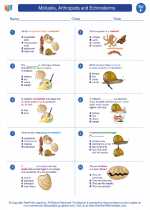 Mollusks, Arthropods and Echinoderms
Mollusks, Arthropods and Echinoderms  Worksheet/Answer key
Worksheet/Answer key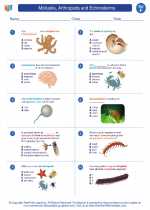 Mollusks, Arthropods and Echinoderms
Mollusks, Arthropods and Echinoderms  Worksheet/Answer key
Worksheet/Answer key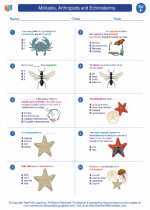 Mollusks, Arthropods and Echinoderms
Mollusks, Arthropods and Echinoderms  Worksheet/Answer key
Worksheet/Answer key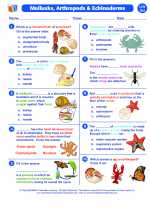 Mollusks, Arthropods and Echinoderms
Mollusks, Arthropods and Echinoderms  Vocabulary/Answer key
Vocabulary/Answer key Mollusks, Arthropods and Echinoderms
Mollusks, Arthropods and Echinoderms  Vocabulary/Answer key
Vocabulary/Answer key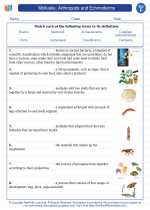 Mollusks, Arthropods and Echinoderms
Mollusks, Arthropods and Echinoderms  Vocabulary/Answer key
Vocabulary/Answer key Mollusks, Arthropods and Echinoderms
Mollusks, Arthropods and Echinoderms  Vocabulary/Answer key
Vocabulary/Answer key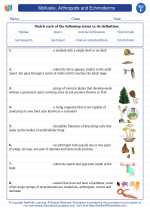 Mollusks, Arthropods and Echinoderms
Mollusks, Arthropods and Echinoderms  Vocabulary/Answer key
Vocabulary/Answer key Mollusks, Arthropods and Echinoderms
Mollusks, Arthropods and Echinoderms  Vocabulary/Answer key
Vocabulary/Answer key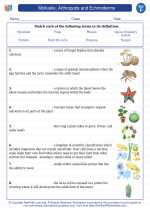 Mollusks, Arthropods and Echinoderms
Mollusks, Arthropods and Echinoderms  Vocabulary/Answer key
Vocabulary/Answer key Mollusks, Arthropods and Echinoderms
Mollusks, Arthropods and Echinoderms 

 Activity Lesson
Activity Lesson
 Worksheet/Answer key
Worksheet/Answer key
 Worksheet/Answer key
Worksheet/Answer key
 Worksheet/Answer key
Worksheet/Answer key
 Worksheet/Answer key
Worksheet/Answer key
 Vocabulary/Answer key
Vocabulary/Answer key
 Vocabulary/Answer key
Vocabulary/Answer key
 Vocabulary/Answer key
Vocabulary/Answer key
 Vocabulary/Answer key
Vocabulary/Answer key
 Vocabulary/Answer key
Vocabulary/Answer key
 Vocabulary/Answer key
Vocabulary/Answer key
 Vocabulary/Answer key
Vocabulary/Answer key

The resources above cover the following skills:
LIFE SCIENCE
From Molecules to Organisms: Structures and Processes